The Secret History of Hyderabad State of the Nizam (South India; 1724 – 1948)
Last Updated on July 15, 2021 by Hamad Subani
The 1857 Rebellion as a British Conspiracy to prevent Indians from Fighting a Real War Against the British

As mentioned earlier, Instead of peacefully retiring the Mughals as titular heads, the Illuminati sought to create a “clash of civilizations” that would be used to conveniently bury all that remained of the Indo-Islamic civilization of the Indian Subcontinent. They would then rebuild the society of the Subcontinent on their own terms. In order to do this, it was necessary to first foment discontent. And the British were intent on bankrupting Hyderabad State to force the Nizam to take up arms against them. Lord Dalhousie, the New Governor General was tasked with fomenting the necessary religious and economic discontent that would lead up to 1857. His policy towards Hyderabad State would be on similar lines, conveying military threats to the Nizam through the Resident, and even imposing a deadline of 31st December 1850 for full payment of debts related to the Hyderabad Contingent.[1]J.D.B. Gribble, History of the Deccan (New Delhi: Rupa & Co. 2009) 204. The deadline soon passed, and the British began delegating officers for different districts of Hyderabad State, which they intended to obtain as “security.”
Attempts at Bullying and Provoking the Nizam
We have seen earlier that the Nizam’s choicest local troops were the Paigah, who were descendants of the the trusted commanders of Asif Jah I. It was around this time that another group, the Chaush, started gaining the favor of the Nizam in his local troops. The Chaush were Sunni Muslims of Arab origin, who had first migrated to the Subcontinent for entering into the services of Tipu Sultan. But with the fall of Tipu Sultan, many of them took up service with the Nizam. Rough, battle-hardy, simplistic and fiercely loyal, they soon proved more useful than the Paigah. But their abrasive nature also meant that they sometimes beated up British troops and British sepoys stationed in Hyderabad. One such fight attracted to the attention of Lord Dalhousie, who warned the Nizam that the incident made him liable to
[……..] indignation of the Government of India, whose power can make you as the as the dust under foot, and leave you neither a name or a trace.[2]J.D.B. Gribble, History of the Deccan (New Delhi: Rupa & Co. 2009) 207-208.
This statement was clearly intended to anger the Nizam by insulting his dignity. And given the timing, with 1857 approaching, it is clearly a provocation. The Nizam made a surprising response on 15th August 1851, paying off half the debt from his secret treasuries.[3]J.D.B. Gribble, History of the Deccan (New Delhi: Rupa & Co. 2009) 209. Lord Dalhousie was clearly not anticipating this, and was hoping that in desperation, the cornered Nizam would join the Rebellion of 1857. But as the Nizam delayed the remaining amount owing, Lord Dalhousie once again began aggressively demanding assignment of districts to pay for the Hyderabad Contingent. The Nizam decided to pawn his family jewels for half a million pounds to pay the remaining amount. To do this, he had his supporter Mr. Dighton formed a bank in Hyderabad, and in exchange for the jewels, Mr. Dighton advanced the Nizam 40 lakh rupees. If the Nizam paid the debt in full, the British would no longer have grounds to harass him, and as Lord Dalhousie had planned, to bully him into joining the Rebellion of 1857. Therefore Lord Dalhousie intervened once again, claiming that the Bank could not be set up in Hyderabad because the Nizam was allowed to only deal with those Europeans whom the Resident approved. Mr. Dighton and Salar Jung I (the nephew of Suraj ul-Mulk) secretly had the jewels put into a pair of jackboots, and with them, Mr. Dighton departed Hyderabad State. Leaving via the British port of Madras, he deposited the jewels with a banking firm in Holland, which happily advanced the money necessary to pay the debts.[4]J.D.B. Gribble, History of the Deccan (New Delhi: Rupa & Co. 2009) 213-214.
Despite these endeavors, the Hyderabad Contingent was in debt again. This was because the British officers managing it were deliberately inflating its expenses and upkeep to the detriment of the Nizam. Lord Dalhousie soon demanded the Berar district, but the Nizam no longer wanted to lose any further territory to the British. The Nizam did his best to stall and delay any such treaty, but when news reached him that Lord Dalhousie intended to march a force from Pune to impose a treaty, he reluctantly agreed. Nevertheless, Suraj ul-Mulk managed to put in several provisions in the treaty that were advantageous to the Nizam as well. According to the treaty of 1853, the Berar district was to be leased to the British indefinitely, in exchange for liquidating the present debt, maintaining the Hyderabad Contingent at a strength of 7000 and the British administering the Berar district. Any surplus in revenue was to be remitted back to the Nizam.[5]J.D.B. Gribble, History of the Deccan (New Delhi: Rupa & Co. 2009) 221. With the British now paying for the expenses of the Hyderabad Contingent out of their own pockets, they immediately dropped the expenses by 40%, indicating that the Nizam had been paying fraudulently inflated expenses all along.[6]J.D.B. Gribble, History of the Deccan (New Delhi: Rupa & Co. 2009) 222. The surplus revenue from Berar was never remitted to the Nizam, and gradually, the British filled the province to the brim with British officials and administrators, who ate away surplus revenue as administration costs. Administration costs were 2.5 times more than the rest of British India.[7]J.D.B. Gribble, History of the Deccan (New Delhi: Rupa & Co. 2009) 232. Finally, in 1902, Berar was leased to the Nizam in perpetuity for a fixed yearly sum of 25 lakhs,[8]J.D.B. Gribble, History of the Deccan (New Delhi: Rupa & Co. 2009) 237. rather than the “surplus revenue” which the Nizam was being cheated on. His sovereignty over the province was recognized by flying his flag over it. But by then, the Hyderabad Contingent had been abolished and Hyderabad State was in a position to administer Berar profitably on its own terms. The notorious Lord Curzon engineered this new deception.
The Rise of Salar Jung I

During the reign of Nasir ud-Daula, Salar Jung I, a nephew of Suraj ul-Mulk became Prime Minister in 1853. Coming from a Shiite family of Bijapuri nobles, Salar Jung I is credited with rescuing the sovereignty of Hyderabad State from the stranglehold of the British, preventing Hyderabad State from becoming a party to the 1857 disaster and kick-starting the economic reformation and industrialization of Hyderabad State, which continued till 1948, and still continues to be the industrial rubric of the region. It must be noted that ever since Asif Jah I consolidated Hyderabad State, he never had the opportunity to nurture agrarian enterprise on a scale similar to Mughal India. And after him, Nasir ud-Daula allowed the British to become creditors of Hyderabad State, which completely reduced the countryside to pre-Mughal levels of instability. Were it not for the intervention of Salar Jung I, Hyderabad State would collapse in financial turmoil and would be taken over by the British. He was clearly one of the best statesmen India had ever produced.
As 1857 approached, the Powers That Be were betting on Hyderabad State joining the Rebellion. If Hyderabad State under the Nizam joined the rebellion, all of India would. And as a dialectical consequence, the British would have a free hand to wage war and destruction against all of India. They would then rebuild Indian Civilization on the Illuminati’s terms. The Powers That Be fully understood that a lot of Indians were seething with hatred against the British. The idea behind the 1857 conspiracy was to destroy these disaffected elements in one full swoop rather than give them the opportunity to wage a real war on their own terms.
Salar Jung I prevents Hyderabad State from joining the 1857 Rebellion


The Rebellion of 1857 began on 10th May of that year. Six days later, the Nizam Nasir ud-Daula suddenly died at the age of 63, very likely poisoned. As I have mentioned earlier, it was a common practice to have such targeted people marry crypto-Jewish women, and the children from such women would later be advanced in the succession struggle. It was likely that in the succession struggle, the British and the Illuminati elements at the Nizam’s court sought to bring to power a supporter of the Rebellion. Or better yet, have rebels march in a candidate of their choosing. This plan failed because of the authority wielded by Salar Jung I. With the new Nizam Afzal ud-Daula being a minor, Salar Jung I was appointed as a regent. In June, the walls of Hyderabad were placarded with mysterious notices asking Muslims to rise up against the British.[9]J.D.B. Gribble, History of the Deccan (New Delhi: Rupa & Co. 2009) 237. Two weeks later, a fiery Friday sermon was delivered at the Mecca Mosque, making a call for jihad.[10]J.D.B. Gribble, History of the Deccan (New Delhi: Rupa & Co. 2009) 237. But Salar Jung I immediately defused the situation by having his chaush guards posted on all gates of the city.[11]J.D.B. Gribble, History of the Deccan (New Delhi: Rupa & Co. 2009) 237. Mysterious attempts were made to emotionally excite the Muslims of Hyderabad by passing them rumours of victories of the rebels (while leaving out their defeats).[12]J.D.B. Gribble, History of the Deccan (New Delhi: Rupa & Co. 2009) 238. 13 Rohilla sepoys (note symbolism of number 13) from Buldana insisted on meeting Salar Jung I, presumably to assassinate him. But instead of meeting them, Salar Jung I handed them over to the British Resident.[13]J.D.B. Gribble, History of the Deccan (New Delhi: Rupa & Co. 2009) 238. The Powers That be soon realized that if Hyderabad State were to join the Rebellion, Salar Jang I had to be eliminated. He was condemned in fiery speeches at Mecca Mosque. And once again, a mob assembled at Mecca Mosque and marched on the British Resident. But Salar Jang I immediately took charge of his forces and had the mob dispersed before it even reached the Residency.[14]J.D.B. Gribble, History of the Deccan (New Delhi: Rupa & Co. 2009) 238. Had he failed to do so, the conspirators would arrange for Hyderabad State to completely join the Rebellion, and in retaliation, it would be annexed by the British, and all its Muslim subjects would later undergo the same fate of what happened to the Muslims of Delhi and Uttar Pradesh.

While Salar Jung I prevented Hyderabad State from becoming a party to the 1857 Rebellion, he was still bound by treaty to supply the Nizam’s troops to the British in order to put down the rebellion. While the rebellion had long been over, such troops were used by the British to dismantle all remnants of Mughal india. This was a dark chapter in the history of Hyderabad State. While Asif Jah I would save the Mughals from apparent annihilation three times, his successors were shamefully forced to tear down what remained of Mughal power.
Nizam Afzal ud-Daula gifted a large tract of land the center of Hyderabad to grain merchants. A bustling market called Afzalgunj can still be found here.
The Strange Case of The Raja of Surapur

Having failed to have the rebels establish a base in Hyderabad State, it was decided that this task be given to Raja Venkatappa Nayaka of Surapur (Shorapur) on the border of Hyderabad State. He was a tributary of the Nizam. The architect of this conspiracy was a close friend of the Raja Phillip Meadows Taylor. Taylor was married to Mary Palmer, the granddaughter of William Palmer, co-founder of the syndicate that had once robbed Hyderabad State Enron style. He would later author several disinformation books on India, such as Confessions of a Thug which implies that Colonialism was actually humanizing India, because Indians were too barbaric to be left at their own fate. The Raja soon began to gather large numbers of Arab and Rohilla mercenaries, and his agents tried to incite sepoys stationed at Kolhapur (home of the rivals of the Chitpavanis), as well as Belgaum and Dharwad (both of these towns were associated with supporters of the now dead Kittur Chennamma. She was First Indian Ruler to lead an armed rebellion against the British East India Company in 1824). When British forces arrived, the Raja’s forces attacked and killed many of them. But before the fort fell, the Raja fled to Hyderabad, where strangely, he sought sanctuary with Salar Jung I. This was probably another attempt to assassinate Salar Jung I. Salar Jung I refused him sanctuary and had him handed over to the British. Colonel Meadows Taylor intervened once again requested the Resident of Hyderabad, Colonel Davidson to save him from being hanged.[15]J.D.B. Gribble, History of the Deccan (New Delhi: Rupa & Co. 2009) 242. Although sentenced to death, the Resident’s intervention resulted in him being briefly imprisoned for four years, and even his estate and his political power were to be returned to him if he “reformed” himself.[16]J.D.B. Gribble, History of the Deccan (New Delhi: Rupa & Co. 2009) 243. But it seems the Raja could not keep his mouth shut. And he was shot dead when word got out that the British were assisting the Rebellion. The circumstances of his death are unclear. British authorities claimed it was a suicide.
Salar Jung I and the Re-emergence of Hyderabad State (1853-1883)
As we have earlier noted, the practice of “revenue farming” of agricultural lands was first instituted by the conspiratorial Sayyid Brothers, and it destroyed the agrarian powerhouses of Mughal India. By 1853, a similar practice had crept into Hyderabad State owing to British demands for payment of debt. Private Talukdars made a steady beeline at Hyderabad, where they would advance money to the government in exchange for being allowed to “revenue farm” any agricultural land that they desired. Once the Talukdar obtained the permit, he was under pressure to extract as much revenue as he could from the peasants, to recoup his investment before the same land was auctioned off to another Talukdar. The effects of this practice were very deleterious, because unlike Mughal India, Hyderabad State had comparatively little organised agricultural activity in the first place. One of the first reforms of Salar Jang I was the abolition of the practice of revenue farming. As a result, farmers were protected from undue taxation, and there was an immediate increase in agricultural activity.[17]J.D.B. Gribble, History of the Deccan (New Delhi: Rupa & Co. 2009) 247. A new system of surveying and assessing agricultural land was introduced, so that peasants on unproductive lands would not be unduly burdened.[18]J.D.B. Gribble, History of the Deccan (New Delhi: Rupa & Co. 2009) 249. To quote,
It was not long before the benefit of the revenue reform made itself felt all over the dominions. not only did the revenue increase, but the cultivator once more became prosperous, barren lands became fruitful, and villages some of which had been deserted for over a hundred years, again became inhabited.[19]J.D.B. Gribble, History of the Deccan (New Delhi: Rupa & Co. 2009) 249.
It can be said with truth of Sir Salar Jung, that he introduced into every department a system which was practical and as near perfection as it could be, but naturally it was an impossible thing to expect that, to use Sir George Yule’s words: “full effect should be given to the intention of his Highness’s Government throughout the Deccan.” Mistakes and delays in administration were bound to occur. But the mere fact of bringing so large a state as Hyderabad from a state of chaos into one of order and routine was in itself a Herculean task, and it required a great statesman to carry it out. We must remember that the Prime Minister was surrounded by intriguers , each ready to grind his own axe, and it required an extraordinary amount of discernment to differentiate between the sycophants and the well-wishers of the State.[20]J.D.B. Gribble, History of the Deccan (New Delhi: Rupa & Co. 2009) 263.
Statistics [………..] show a remarkable improvement in the agricultural classes. People were not compelled to contribute to an income tax, a licenser, or any such taxes , which in other countries have given rise to so much dissatisfaction among the agricultural and depressed classes.[21]J.D.B. Gribble, History of the Deccan (New Delhi: Rupa & Co. 2009) 265.
For revenue survey, a school of training was established for revenue officers. And thirty years later, revenue had tripled.[22]J.D.B. Gribble, History of the Deccan (New Delhi: Rupa & Co. 2009) 250. He overhauled the justice system and created additional courts for the districts. He also established separate police forces in all of the districts. A Secretariat under the Prime Minister was established. And for the first time, Hyderabad State had a Government Treasury. Treasuries were also created for all the districts. A School Board was established and schools were opened up in Persian, Telugu and Urdu medium, which taught History, English, Geography and Mathematics. Medical clinics for women opened up. In 1850, construction began on a railway line that linked up with Bombay.
Formation of the British Intelligence Bureau

Immediately after 1857, the British created a secret Intelligence organization in India. This organization, now known as the Intelligence Bureau, continues to operate in the same hyper-secretive manner and will be revisited further in this paper. But what is noteworthy about its origins is that it was probably created specifically to counter the threat posed to the Illuminati by Hyderabad State. To quote,
Within six months of taking over, Cross wrote a letter, dated March 25, 1887, Secret Dispatch No 11, to the Viceroy’s Camp in India. He asked that a system be set up for “collection of secret and political intelligence in India.” Specifically, any observation “with particular reference to the expedience of employing especially qualified natives in those parts of the Empire, notably the Punjab and Hyderabad, which are exceptionally exposed to political intrigues or dangers.”
[…….]In British controlled provinces, Dufferin planned to use the services of the police force. In native ruled princely states, he planned to use “the existing means at the disposal of Political Offices, for the collection of intelligence on political, social and religious movements¸ the nature of which is fully explained in the accompanying papers.” Dufferin believed that Indians would object to the creation of a large British detective force stomping all over the place.
When the British would leave India in 1947, they were careful to destroy all pertinent records of the IB’s activities.
Attempted Assassination of Salar Jung I
As I have mentioned earlier, it was a common practice to have targeted people such as the Nizams to marry crypto-Jewish women, and the children from such women would later be advanced in the succession struggle. But now, succession struggles were no longer taking place because the British were bound by treaty to back whomsoever the Nizam picked as his successor in his lifetime. It seems the Powers That Be wanted to unseat Afzal ud-Daula by having one of his crypto-Jewish wives poison him and then put her child on the throne. But this could not be accomplished because of the all-powerful Salar Jung I. Therefore an attempt to assassinate Salar Jung I was made in 1868. He was fired at while being driven to the Durbar.[23]J.D.B. Gribble, History of the Deccan (New Delhi: Rupa & Co. 2009) 260.
Salar Jung I escaped being hit, and the culprit was apprehended by an angry crowd. But his identity and motives remain a mystery.
The conspirators went ahead with the poisoning of Afzal ud-Daula one year later, who died in 1869 at the tender age of 42 years. The conspirators probably hoped that an ensuing shakeup would dislodge Salar Jung I and pave the way for the installation of a compromised puppet. Since Afzal ud-Daula did not anticipate dying at such a young age, He had nominated the two year old Mahbub Ali Khan as a crown prince assuming he would soon grow up. Now, Salar Jung I and Shams ul-Umara would have to be the regents. This inadvertently strengthened Salar Jang I even more.
Salar Jung I would try to regain the district of Berar from the British, but they refused to part with it.[24]J.D.B. Gribble, History of the Deccan (New Delhi: Rupa & Co. 2009) 262.
Assassination of Salar Jung I
Salar Jung I had already embarked on a tour of Europe on his own, which had made him wildly popular in international circles. Now, he had made full preparations to go on a second tour of Europe with the young crown prince, now 17 years old, to give him exposure to industrialization. To quote the official account of circumstances surrounding his death,
On the 5th of February [1883] Duke John of Mecklenburg Schwerin arrived at the Residency on a brief visit, and Sir Salar with the generous hospitality for which he was so well-known, made arrangements to show him all the sights of Hyderabad, winding up with a grand banquet in his honour. The latter however had to be curtailed owing to the death of the Begum of Nawab Shams ul-Umara, a daughter of his late Highness Afzal ud-Daula. The party was restricted to sixty, and was to have taken place on the night of February 8th. On the evening of the day previous the Minister and his guest visited Mir Alam Tank, where they and a party of ladies and gentlemen, who had been invited to meet the Duke, spent a pleasant hour in sailing about the lovely lake. Sir Salar returned to his palace, and after dinner, as was his wont, worked till nearly midnight, and then retired to rest. At about two in the morning he was seized with an illness.[25]Syed Husain Bilgrami, A memoir of Sir Salar Jung, G.C.S.I. (Times of India Steam Press, 1883) 125.


Establishment historians claim the illness was diagnosed as cholera. But this was the diagnosis of a British doctor. According to another source, Salar Jung I died eating canned oysters.[26]Caroline Keen, Princely India and the British: Political Development and the Operation of Empire (London: I. B. Taurus, 2012) 255: Note 140. Since Oysters are native to saltwater, they could not found in the landlocked State of Hyderabad. And the indication that they were canned means that they were brought from Europe. The only reasonable guess is that the Duke John of Mecklenburg Schwerin brought them to the picnic and served them to Salar Jang I. It seems only reasonable that after several failed attempts at assassinating Salar Jung I, the British would prefer to have a German royal do it. That way, if the deed ever came to light, relations between Britain and Hyderabad State would never be strained. It is also interesting to note that Duke John of Mecklenburg Schwerin had great interest in the Colonial Empires of Germany. Since all European colonisation projects served the Illuminati, it is not unusual to sometimes see them giving a hand to each other, while outwardly professing rivalry.
According to Miles Mathis, the Mecklenburg line possibly represents Jews of Poland who infiltrated European aristocracy. This line is also connected to the House of Windsor (the British Royal Family) which originally started out as a German royal family. These seemingly disparate factions are known to scratch each other’s backs, even today.
| ↑1 | J.D.B. Gribble, History of the Deccan (New Delhi: Rupa & Co. 2009) 204. |
|---|---|
| ↑2 | J.D.B. Gribble, History of the Deccan (New Delhi: Rupa & Co. 2009) 207-208. |
| ↑3 | J.D.B. Gribble, History of the Deccan (New Delhi: Rupa & Co. 2009) 209. |
| ↑4 | J.D.B. Gribble, History of the Deccan (New Delhi: Rupa & Co. 2009) 213-214. |
| ↑5 | J.D.B. Gribble, History of the Deccan (New Delhi: Rupa & Co. 2009) 221. |
| ↑6 | J.D.B. Gribble, History of the Deccan (New Delhi: Rupa & Co. 2009) 222. |
| ↑7 | J.D.B. Gribble, History of the Deccan (New Delhi: Rupa & Co. 2009) 232. |
| ↑8 | J.D.B. Gribble, History of the Deccan (New Delhi: Rupa & Co. 2009) 237. |
| ↑9 | J.D.B. Gribble, History of the Deccan (New Delhi: Rupa & Co. 2009) 237. |
| ↑10 | J.D.B. Gribble, History of the Deccan (New Delhi: Rupa & Co. 2009) 237. |
| ↑11 | J.D.B. Gribble, History of the Deccan (New Delhi: Rupa & Co. 2009) 237. |
| ↑12 | J.D.B. Gribble, History of the Deccan (New Delhi: Rupa & Co. 2009) 238. |
| ↑13 | J.D.B. Gribble, History of the Deccan (New Delhi: Rupa & Co. 2009) 238. |
| ↑14 | J.D.B. Gribble, History of the Deccan (New Delhi: Rupa & Co. 2009) 238. |
| ↑15 | J.D.B. Gribble, History of the Deccan (New Delhi: Rupa & Co. 2009) 242. |
| ↑16 | J.D.B. Gribble, History of the Deccan (New Delhi: Rupa & Co. 2009) 243. |
| ↑17 | J.D.B. Gribble, History of the Deccan (New Delhi: Rupa & Co. 2009) 247. |
| ↑18 | J.D.B. Gribble, History of the Deccan (New Delhi: Rupa & Co. 2009) 249. |
| ↑19 | J.D.B. Gribble, History of the Deccan (New Delhi: Rupa & Co. 2009) 249. |
| ↑20 | J.D.B. Gribble, History of the Deccan (New Delhi: Rupa & Co. 2009) 263. |
| ↑21 | J.D.B. Gribble, History of the Deccan (New Delhi: Rupa & Co. 2009) 265. |
| ↑22 | J.D.B. Gribble, History of the Deccan (New Delhi: Rupa & Co. 2009) 250. |
| ↑23 | J.D.B. Gribble, History of the Deccan (New Delhi: Rupa & Co. 2009) 260. |
| ↑24 | J.D.B. Gribble, History of the Deccan (New Delhi: Rupa & Co. 2009) 262. |
| ↑25 | Syed Husain Bilgrami, A memoir of Sir Salar Jung, G.C.S.I. (Times of India Steam Press, 1883) 125. |
| ↑26 | Caroline Keen, Princely India and the British: Political Development and the Operation of Empire (London: I. B. Taurus, 2012) 255: Note 140. |


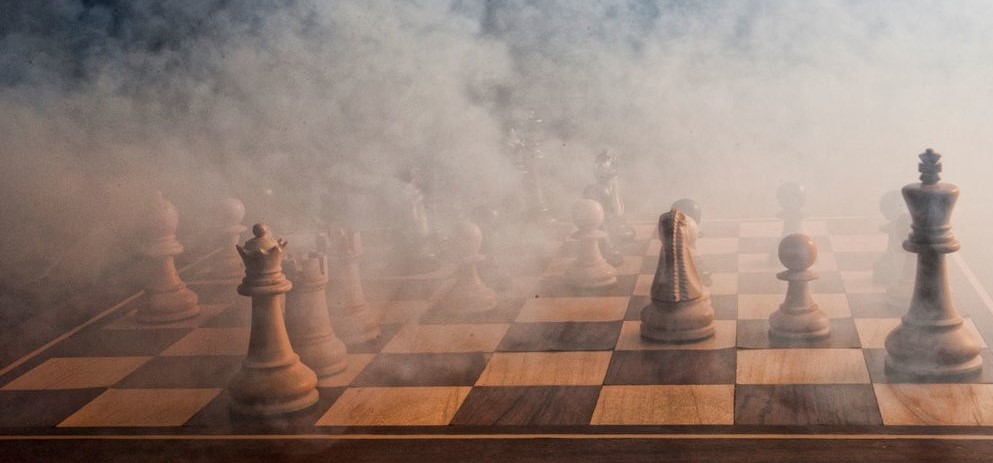




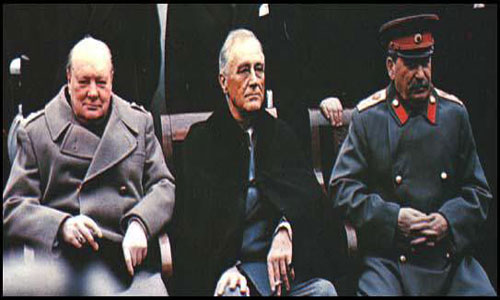

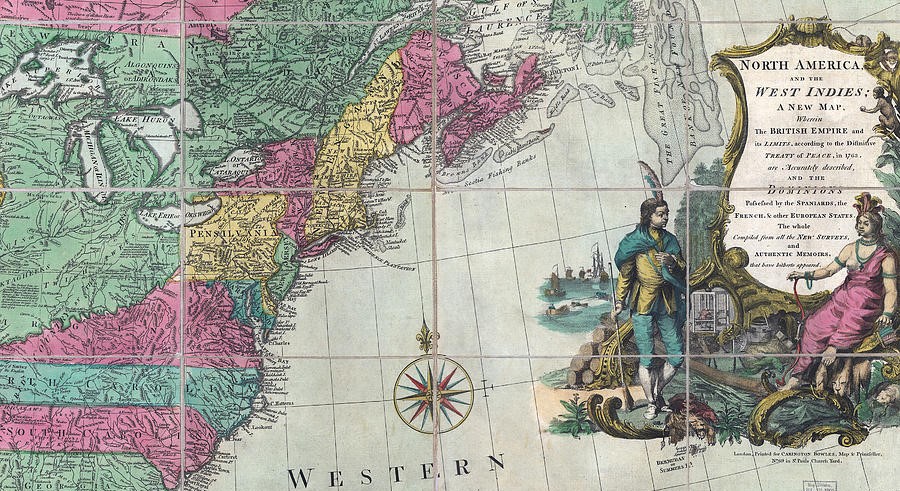
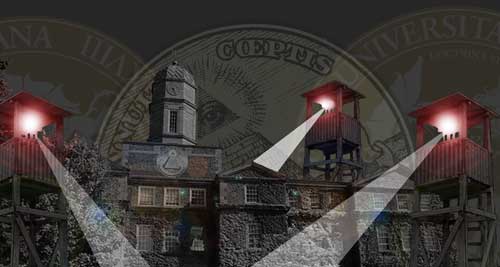
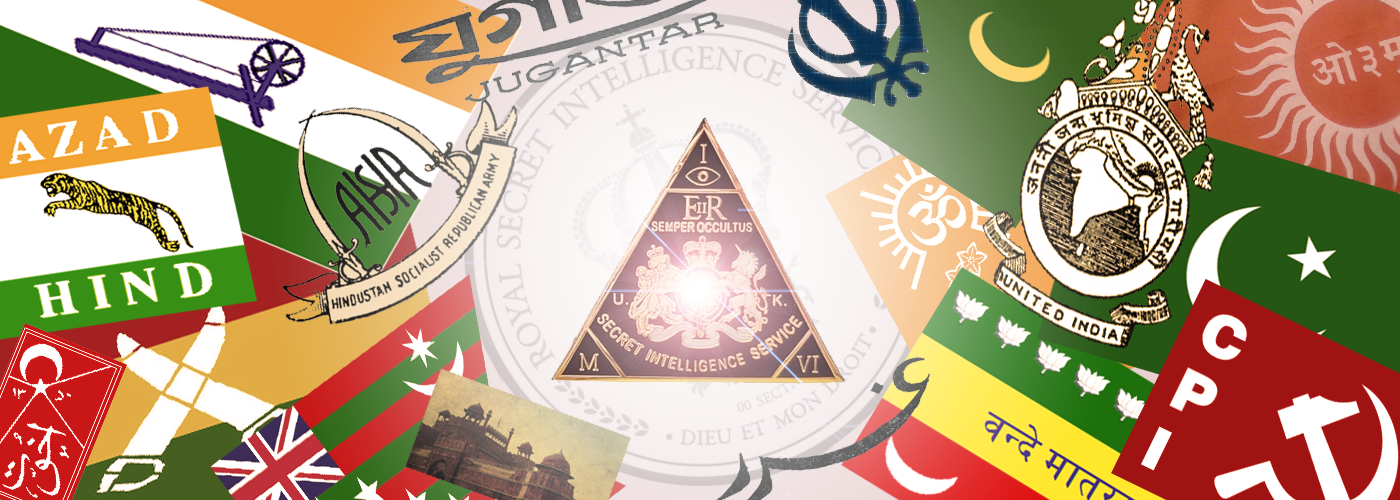


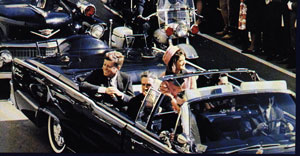

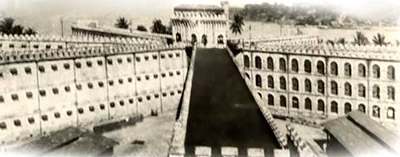


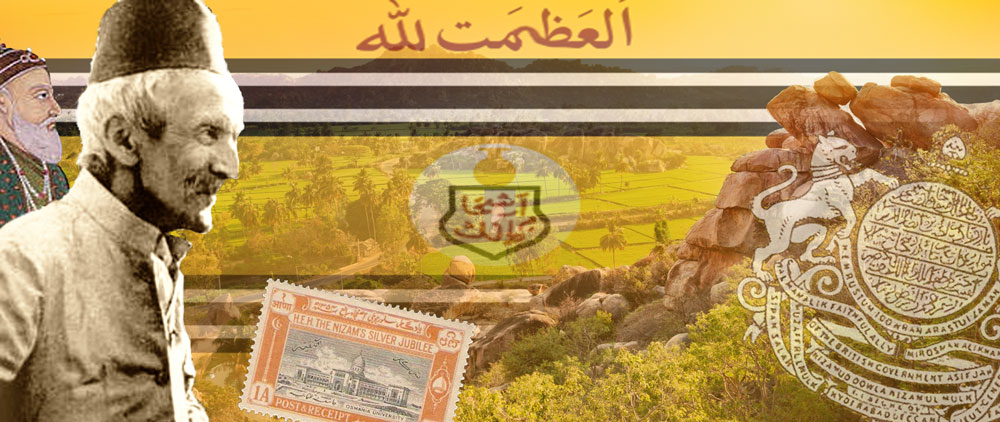






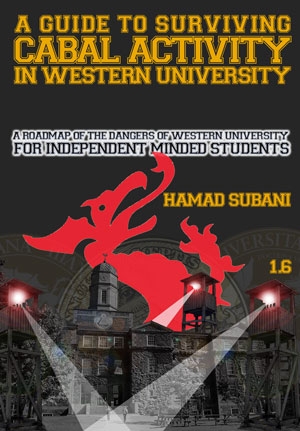
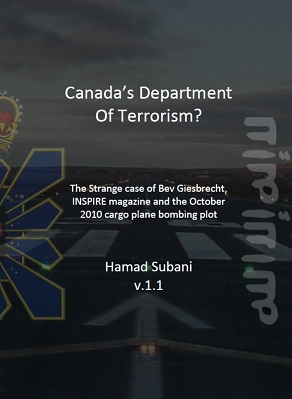
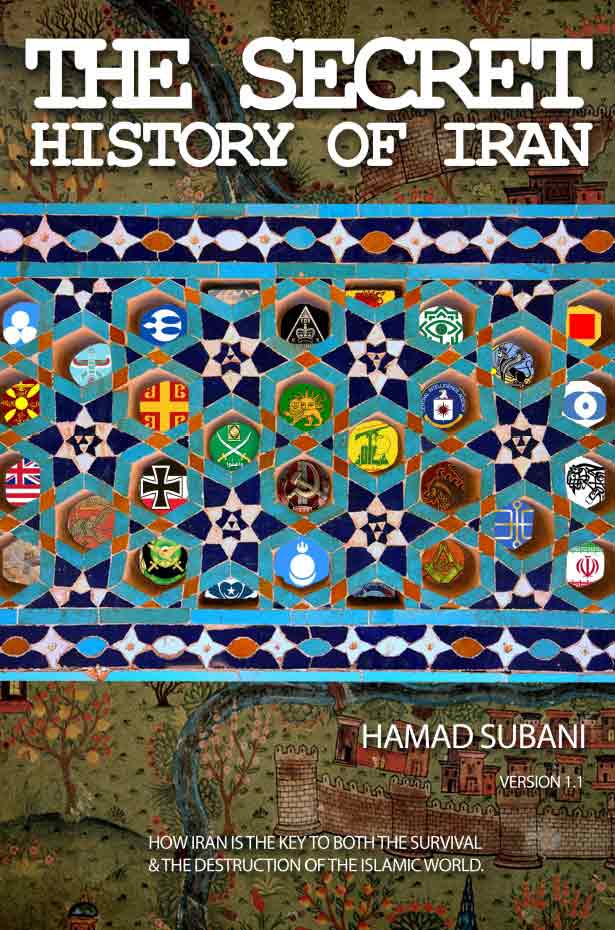
The First Freemason Lodge in India was not at the Gosha Mahal Baradari Hyderabad. It was a grand building built by teh Last Qutub Shahi ruler Tana Shah in 1682 and was donated to teh freemason by Nizam in 1872.
The first lodge was established for the British Military and other authorities in India in 1728 at Fort William Calcutta called Star of the East.
The doors of freemason were opened for Indians in 1775, when Nawab Umdatul Umra of Carnatic opened first lodge in Trichonopoly, in South India.
Please refer Freemasonry in India
https://linfordresearch.info/fordownload/World%20of%20Fmy/Nairn%20India.pdf
Shoukat Ali Khan Hyderabad India
Thanks for this.
The grave of Aurangzeb is in the premises of a Dargah in Khuldabad near aurangabad. there is no tomb over it nor even a structure.
Taj Mahal like structure is in aurangabad, whichis around ten miles away from his grave.
So what you have mentioned about his grave is not correct.
Thank you for the clarification. The Taj Mahal like structure is actually the tomb of his wife. I have corrected.
Gosh !!! what an intellectual article . Very first time I got to read something eloborative on Shah Waliulllah and the reason of his invitation to Abdali. You are incredibly remarkable in presenting the profoundness and minute details on the subject. Are you a historian or have you written any books.
Share your articles or suggest some books on historical India from Muslim rulers point of view. Had enough of Aurangazeb bashing and Muslim rule criticism nowadays around. So was wondering the justification from the other side.
Please do share.
You could take a look at my book The Secret History of Iran. Since the history of medieval Iran is linked to that of India, it does contain a lot of previously undisclosed information on the Mughals and other Indian dynasties as well.
Qasim Rizvi did not escape , he did his prison term and was relocated to Pakistan by the Indian government . I find lots of unsubstantiated facts in your write up.
This is not the official history of Hyderabad State, it is the Conspiracy History of Hyderabad State, where we try to fill in the blanks in the official narrative. Its not for everybody. Do you really think Qasim Rizvi would be let go so leniently?
Hi, certainly, history of Hyderabad is enticing. I have come across a novel “Theft of Nizam’s Gold” by a writer from Hyderabad, Naser Banaqeeb who presented the life of Nizam in a wonderful way. The novel is a gripping tale of bygone era of Nizam, love and mystery of the gold stolen – the history doesn’t have any record of it. Yes, the gold stolen from Nizam’s treasure has no mentioning in any books. But, the author described the same in an artistic manner. The novel is available online at amazon.
Dear Abraiz Ali Khan,
I am based in Mumbai and an avid reader of “authentic” historical books.
I would be much obliged if you could share with me any such books in your possession, including “Tragedy of Hyderabad”.
My contact details are: iyerpnpl@gmail.com
Warm regards,
Arvind Iyer
Hello Mr. Arvind. This is the book I have mentioned: https://www.goodreads.com/book/show/18360701-tragedy-of-hyderabad
I found it in a Sunday, second-hand book market. Currently, this book is with my brother who lives in Canada. Sorry for not being able to share it.
Dear Mr. Abraiz,
I have a nephew in Canada whom I will be meeting at a family function in October. If you can share with me the contact details of your brother in Canada, my nephew can coordinate with him and photocopy the book and hand it over to me when we meet.
Incidentally I am in Hyderabad on Monday June 25th. I would be very happy to meet with you.
Once again my email id is: iyerpnpl@gmail.com
Warm Regards,
Arvind Iyer
Pl visit Haziq and Mohi a book store near Charminar , they have copies . Picked up my copy of Tragedy of Hyderabad and other books on hyderabad from there . The store finds a mention in The Last Nizam by Jhon Zubrcki and is regularly frequented by history buffs , most notable being William Dalrymple , he has given a beautiful account in The White Mughals of William Kirkpatrick the British resident during the end of the 18th century and his affair with Khai un Nissa great niece of Aristu Jah the prime minister at Nizam Ali Khan’s court . He eventually ended up marrying her and converted to Islam . Most of his research work was carried out by literature provided by Haziq and Mohi .
Hello Mr Iyer , you can get the book and many other out of publication books on Hyderabad at Haziq and Mohi book store near Charminar . The store finds a mention in the Last Nizam by Jhon Zubrycki and is frequented by history buffs from India and abroad , most notable being William Darlymple whose book The White mughals revolves around the stories of William Kirkpatrick the british resident at the end of 18th century in Hyderbad and his affair with Khai un Nisa the great niece of Aristu Jah the prime minister of Nizam Ali Khan , which he later marries and converts to Islam .
You may also be interested in The Destruction of Hyderabad by Abdul Gafoor Abdul Majeed Noorani. No idea where to find it though.
Its overwhelming to read this..present day hyderabadis are so ignorant about their past. . I wish many of them could read this
Assalaamualaikum. I am a citizen of Hyderabad itself. Born and brought up here. I do have an interest in our history as well. You have written a very engaging piece of research. Do accept congratulations for it. As it happens, there are a few points that I do disagree with. One is your saying that venerating graves is an “Islamically abhorrent practice.” But maybe you subscribe to one of those sects that see graves as idols, so let it pass. I don’t need to tell you that scholars have compiled voluminous works on this subject. Read them if you will.
The other point that raises my hackles is the flippant description of Jamia Nizamia. As it happens, I am closely related to this institution. All my teachers of Islamic sciences have studied at this institution. Your description of it stems of ignorance or, if you will excuse me for saying so, your prejudice against those venerate graves. Jamia Nizamia was started in 1876 AD. Its founder, who was the teacher (Ataleeq as they called them then) of the 6th and 7th Nizams, passed away in 1917. If you would look into the history of Jamia Nizamia and its scholars, you would see many un-Islamic activities and trends being checked by them. Keep in mind that it was a nascent institution without any power of enforcement. Which means that Jamia Nizamia could only tell that something was wrong and must be stopped, but could not actually go out and stop them. Frankly, there are many firsts the credit of whom goes to Jamia Nizamia and more specifically its founder, Imam Anwarullah Farooqui (May Allah shower His Mercy on him). Hyderabad was the only state to have departments of Qazaath – where marriages, divorces, etc. were registered, the only state to outlaw reprehensible Hindu customs like Murli, etc., the only state to have standardized weights, possibly the only state or one of the very few which trained people with a standardized syllabus to administer basic Islamic laws to the populace. The State Central Library (earlier known as Asafjahi Library) was established at the behest of Shaykh Anwaarullah. No, they were nor politically active. As I said, it was a nascent institution, just started. Maybe in time, if Hyderabad state would have been there, they would have played a greater role.
The best part about your piece is that you give sources. I do have some of the books like Tragedy of Hyderabad with me. I will surely read up as much as I can the source books that you quote and see your point of view in much broader and richer detail.
Best of luck for your future research.
Assalaamualaikum.
Thank you for the additional info on Jamia Nizamia. While I do accept that Jamia Nizamia did in fact play a positive role, I believe that the fact that it was an official institution limited and hindered its ability to fulfill its role in a more wholesome manner. For example, they could not critic the sponsorship and inclusion of Shiite practices of later Nizams. And by and large, they did fail to enlighten the Muslim population, as evidenced by the level of ignorance and the incorporation of non-Islamic practices into Islam by the common people. If The Powers That Be were serious about Islam, they would have supported it more thoroughly, perhaps with a budget much bigger than the war aid they gave to Britain. As you mentioned, they started doing so, but it was too little, and too late.
In Islamic history, Muslim groups attain political power only when they start imposing and reinstating the natural order of things. Otherwise nature overcomes them. Towards the end, the Nizams began failing to maintain their holistic connection to the Mystery Saint.
Dude you are awesome. Where you been?
Do you have any recommendation for occult conspiracy sites with muslim perspective?
The main reason why it’s so hard to find this is the cultural lag muslim readers annnd writers have due to the ravages of colonialism westernization and the like. In the world that emerged after ww2 seems the only ticket for indians and muslims to prosper in the west was the sci/tech route. So as a fractured bordered nation, there was not much literal development.
For example most muslims i know go as far as saying 911 was ‘possibly’ a conspiracy and that Kanye or whoever is a free mason, and that’s as far as it goes. They will never include the saudis or big banks or the company they work for.
Anyway look forward to reading your next masterpiece.
The only “Islamic” Conspiracy website that I find worth a mention is that of David Livingstone> http://www.conspiracyschool.com/